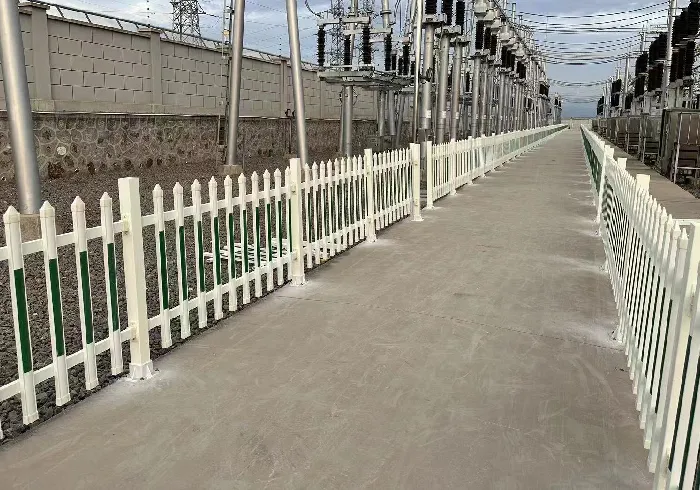loading...
- No. 9, Xingyuan South Street, Dongwaihuan Road, Zaoqiang County, Hengshui, Hebei, China
- admin@zjcomposites.com
- +86 15097380338
- Welcome to visit our website!
Innovative Solutions for Durable and Lightweight FRP Decking in Modern Construction Projects
The Advantages of FRP Decking A Modern Solution for Outdoor Spaces
In recent years, the demand for innovative materials in construction has grown significantly, driven by the desire for durability, sustainability, and low maintenance. One such material gaining popularity in outdoor and industrial applications is Fiber Reinforced Polymer (FRP) decking. This composite material offers a range of advantages that make it an appealing alternative to traditional decking options such as wood, metal, or concrete.
What is FRP Decking?
FRP decking is made from a polymer matrix reinforced with fibers, typically glass or carbon fibers, which enhances its structural integrity and performance. This lightweight material is designed to withstand harsh environmental conditions, making it ideal for various applications, including bridges, walkways, marinas, and residential outdoor spaces.
Durability and Longevity
One of the most significant advantages of FRP decking is its exceptional durability. Unlike wood, which is susceptible to rotting, warping, and pest infestations, FRP is highly resistant to water, chemicals, and UV radiation. This characteristic makes it an excellent choice for wet environments or areas that experience harsh weather conditions. Moreover, because FRP does not corrode like metal decking, it can maintain its structural integrity over time, resulting in a longer lifespan and lower lifecycle costs.
Low Maintenance
Maintenance is a critical consideration for property owners when selecting decking materials. Traditional wood decking requires regular staining, sealing, and inspections for signs of degradation. In contrast, FRP decking is virtually maintenance-free. It can be easily cleaned with soap and water, and there is no need for chemical treatments. This low maintenance requirement translates into significant time and cost savings for homeowners and facility managers alike.
frp decking

Safety Features
Safety is paramount in outdoor environments. FRP decking surfaces can be designed to be slip-resistant, providing users with a safer surface to walk on, especially in wet conditions. Additionally, the non-conductive nature of FRP means it does not transfer heat like metal, making it more comfortable to walk on in warm weather.
Sustainability
As environmental concerns become increasingly prominent, many builders are seeking sustainable materials. FRP decking fits this criterion as it can be made from recycled materials, and its durability reduces the need for frequent replacements, minimizing waste over time. Furthermore, the energy required to produce and transport FRP is generally lower than that of traditional materials, contributing to a smaller carbon footprint.
Versatility and Aesthetics
FRP decking is highly versatile and can be customized to meet various design and performance requirements. It is available in various colors, patterns, and textures, allowing builders and designers to create aesthetically pleasing outdoor spaces. Whether you are constructing a modern patio or an industrial walkway, FRP can complement the design while providing the necessary strength and durability.
Conclusion
In conclusion, FRP decking is emerging as a modern solution for outdoor applications, offering a combination of durability, low maintenance, safety features, and sustainability. Its versatility makes it ideal for various settings, from residential to commercial, while its long lifespan contributes to environmental conservation. As more property owners and builders recognize the benefits of this innovative material, FRP decking is poised to become a standard in outdoor construction for years to come. Embracing this technology not only enhances the functionality of outdoor spaces but also promotes a more sustainable approach to building and design.
-
GRP Structures: The Future of Lightweight, High-Performance EngineeringNewsJun.20,2025
-
FRP Water Tank: High-Performance Storage for Corrosive and Clean Water SystemsNewsJun.20,2025
-
FRP Square Tube: The New Industry Standard for Chemical and Structural ApplicationsNewsJun.20,2025
-
FRP Pultruded Profiles: The Ultimate Choice for Lightweight Structural StrengthNewsJun.20,2025
-
FRP Handrails: The Safer, Smarter, and Stronger Choice for Modern InfrastructureNewsJun.20,2025
-
FRP Grating: The Smart Solution for Durable, Lightweight Industrial FlooringNewsJun.20,2025
-
Why Choose a Galvanized Water Tank for Your Storage NeedsNewsMay.21,2025
